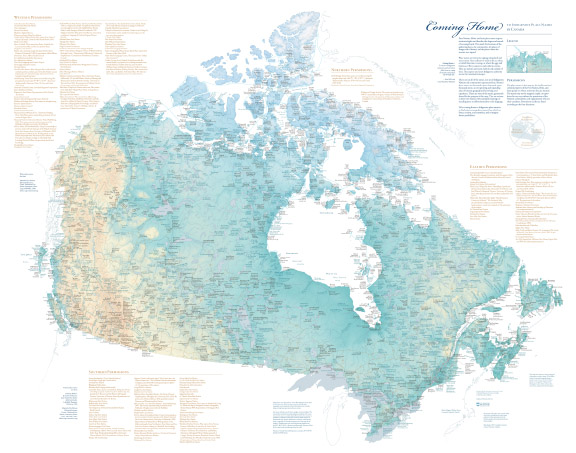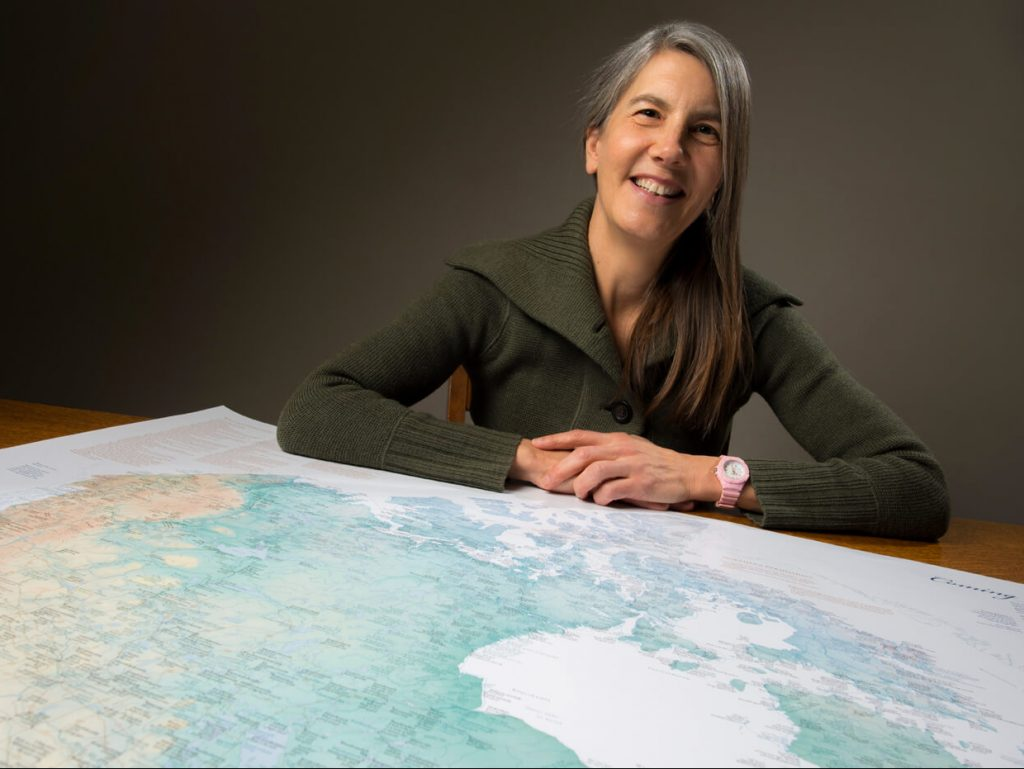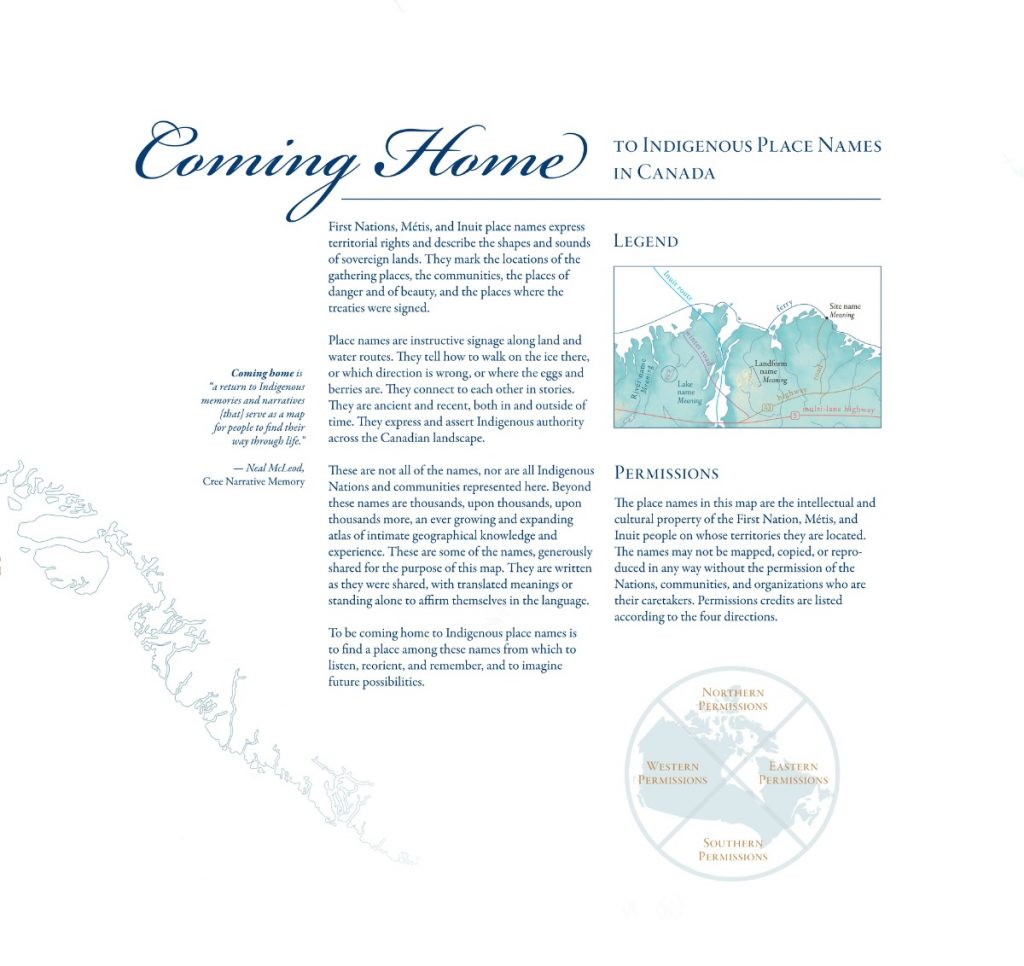
Specifications
Size: 42″ x 33″
Available rolled or folded
Publisher:
Canadian–American Center
The University of Maine
Orono, Maine, USA

The Cartographer

Dr. Margaret Wickens Pearce is a cartographer and the author of several award-winning maps, including Ivoka Eli-Wihtamakw Kәtahkinawal/This is how we name our lands (Penobscot Cultural & Historic Preservation, 2015) in collaboration with Penobscot C&HP, and They Would Not Take Me There: People, Places and Stories from Champlain’s Travels in Canada, 1603-1616 (Canadian-American Center, 2008), in collaboration with Michael J. Hermann. She also maps as Further Reading and Studio 1:1.
Recognition and Awards
- First Place, Thematic Map category, 2017 CaGIS Map Design Competition
- Selected for Atlas of Design, Volume 4 (North American Cartographic Information Society, 2018)
- Selected for “Diagrams of Power,” Ontario College of Art and Design University exhibition, 11 July-30 September 2018
- “OCADU’s Diagrams of Power: All these maps and it’s still a bit lost,” Review by Murray Whyte,Toronto Star 28 July 2018.
“…the most compelling thing here. It’s–wait for it–a map, conventional-seeming until viewed up close. The familiar boundaries of Canada span sea to sea, filled in-between with words. It’s called Coming Home to Indigenous Place Names in Canada, and God bless its straightforwardness: Over years, Margaret Pearce collaborated with dozens of Indigenous groups to resurrect traditional names for places nationwide (my local favourites: ‘At where it is heard approaching,’ somewhere north of what we call Huntsville, or ‘Place of calling silvery waters’ near the Kawarthas). It remakes the familiar into something glorious and new, saying so clearly what so much else here is straining to articulate: Land is power, and its surface only tells one tale. Scratch it just a little and see what’s underneath.” - To be featured in “Aalaapi,” Théâtre d’aujourd’hui, Montréal, Québec, 29 January-16 February 2019
- Reviewed in BC Studies No. 202
About the Map
To mark the 150th anniversary of the Confederation of Canada, the Canadian-American Center at the University of Maine is pleased to release a new map, Coming Home to Indigenous Place Names in Canada. The map honors Indigenous place names in Canada and the assertion of Indigenous authority through place names.
Commissioned by Dr. Stephen J. Hornsby, Director of the Canadian-American Center, Coming Home to Indigenous Place Names in Canada was researched and designed by Dr. Margaret Wickens Pearce. The map depicts Indigenous place names across Canada, shared by permission of First Nations, Métis, and Inuit communities and people. The names express territorial rights and describe the shapes, sounds, and stories of sovereign lands. The names mark the locations of the gathering places, the communities, the places of danger and beauty, and the places where treaties were signed. The names are ancient and recent, both in and outside of time, and they express and assert the Indigenous presence across the Canadian landscape in Indigenous languages.
The map does not depict all of the Indigenous place names of Canada, nor are all Indigenous Nations and communities represented. Beyond the map’s names are thousands upon thousands more, an ever growing and expanding atlas of intimate, geographical knowledge and experience.
The intention of the map is to create respect for Indigenous homelands and sovereignties, and a feeling for and understanding of the place names.
The Canadian-American Center does not profit from the production and sale of this map. Members of the public are invited to purchase a copy for the cost of printing and postage. Contributors of place names to the map are invited to email the Canadian-American Center for a discounted rate.
To purchase a copy, please visit our online store!

